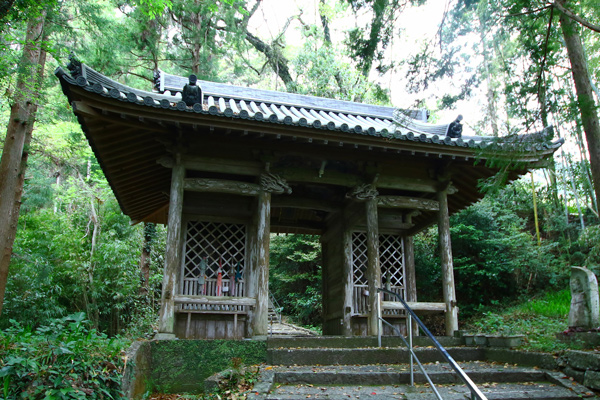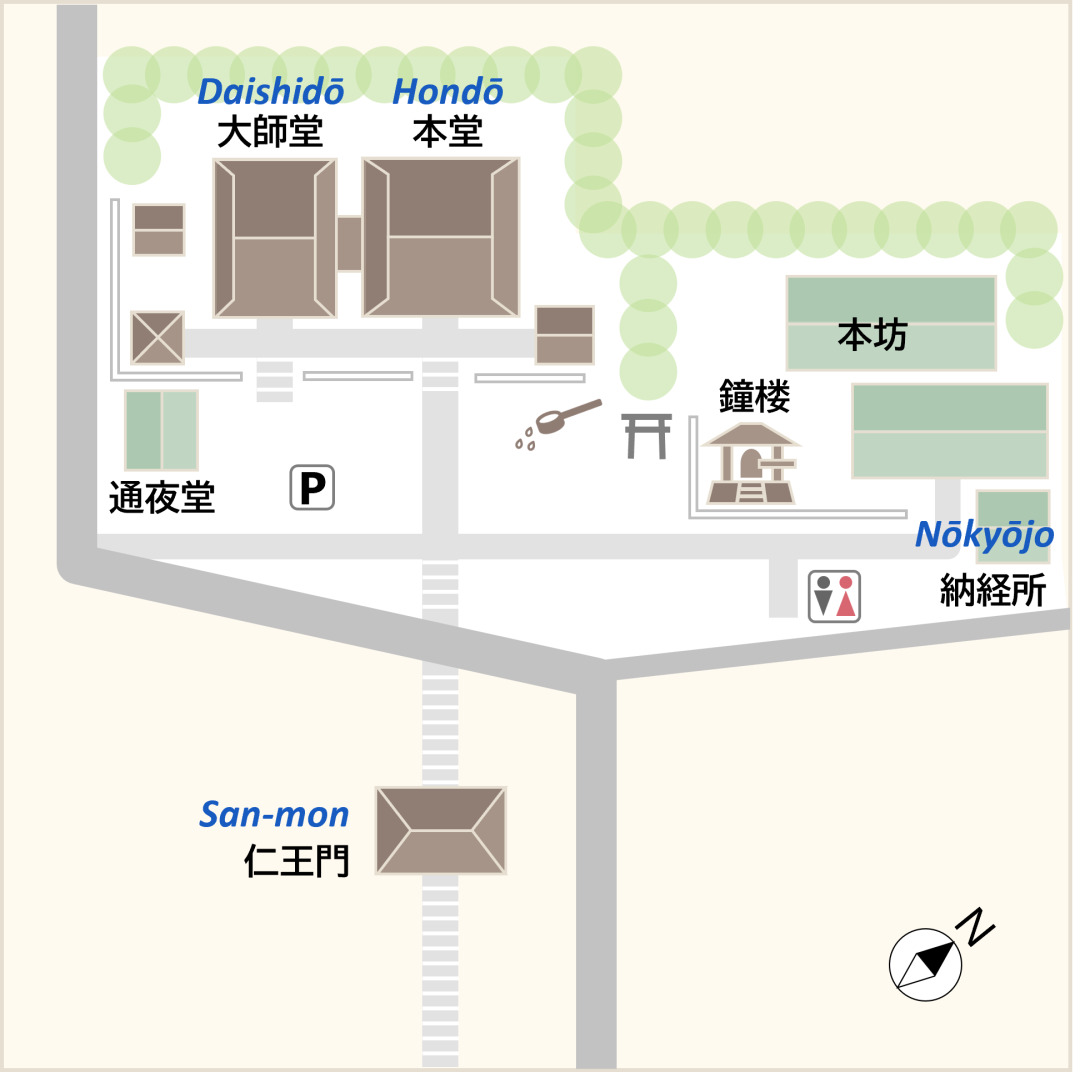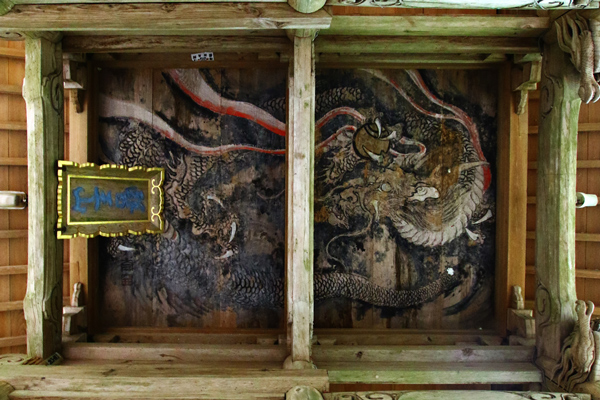The Shikoku Pilgrimage Temple Guide
Temple 35, Kiyotakiji

Precinct map

History of the temple
Kiyotakiji is located in the northern part of Tosa City, halfway up Mt. Io. It is known for Tosa washi, traditional Japanese paper made in Tosa (Kochi), and also for handmade paper used for shoji, the sliding doors in traditional Japanese houses. The origin of this paper can be traced back to Kiyotakiji, which has a close relationship with Kobo Daishi. The temple is a center of deep faith as an important source of water for processing bark from the paper mulberry bush to make washi.
According to legend, in 723 Gyoki was on a pilgrimage when he felt a spiritual energy in this place. Gyoki sculpted a statue of Yakushi Nyorai (Medicine Buddha). He built a temple to enshrine this image and named it Kageyamamitsuin Shakumotoji. Kobo Daishi visited the temple during the Konin period (810-824). He built a platform on a rock about 300 meters above the Hondo and performed a 17-day ascetic ritual to pray for Buddhist deities. On the final day, when he poked the platform with his staff, fresh water gushed out from the rock and formed a pond that looked like a mirror. The mountain name (temples are metaphorically called mountains) and the institutional name were changed to what they are today, and the temple was designated as a sacred site.
This water is useful not only for irrigating the fields at the foot of the mountain, but also for soaking paper mulberry bark and making paper, contributing to the development of the Tosa washi industry.
According to another temple legend, the third prince of Emperor Heijo (reigned 806-809) became a priest because he had a dream of Kobo Daishi. He took the name Shinnyo. Shinnyo visited this temple, prayed for good health and profit, and built a five-story pagoda. He was one of Kobo Daishi's ten great disciples who later went to Tang Dynasty China. During the Edo period (1603-1868), the Tosa (Kochi) lord was a great devotee of the temple and donated vast lands to help maintain it. It is said that it had seven major temple buildings and ten or so subordinate temples.
The symbol of the temple is a large statue of Yakushi Nyorai, which is taller than the roof of the Hondo.
Highlights
Ceiling painting of Niomon Gate
In 1900, when the gate of Kiyotakiji was built, two sets of ceiling paintings, Koryuzu (dragon) and Tennyozu (heavenly maidens), were painted by Kubo Nanso* and were dedicated to the temple. The dragon is depicted on the two central panels and the maidens on the left and right sides. The paintings are masterpiece, with vivid ink strokes, flowing and vigorous brush strokes, and superb colors. In recent years, Tennyozu was damaged by animals and was transferred to the Homotsukan.*Kubo Nanso (1848-1917) studied under Hirose Doyi and Aoki Nanmei. He excelled in Nanga (a school of Japanese painting), achieving fame as a painter in this region.
Standing statue of Yakuyoke Yakushi Nyorai (Medicine Buddha who Wards Off Bad Luck)
This statue is 15 meters tall including the pedestal. It is located in front of the Hondo and was donated by a paper manufacturer in 1933. Inside the pedestal, visitors can walk around the 88 spiral steps to be purified.
Gyakushuto
Pagoda for making memorial offerings to yourself before death. It is now off-limits.

Details
Names: Iōzan, Kyōchiin, Kiyotakiji
Denomination: Shingon sect, Buzan school
Principal image: Yakushi Nyorai
Founder: Gyoki
Founded: 723
Access
Address: 568-1, Cho, Takaoka-cho, Tosa City, Kochi 781-1104
Phone: 088-852-0316
Parking: None
Lodging: None
Official website: None
